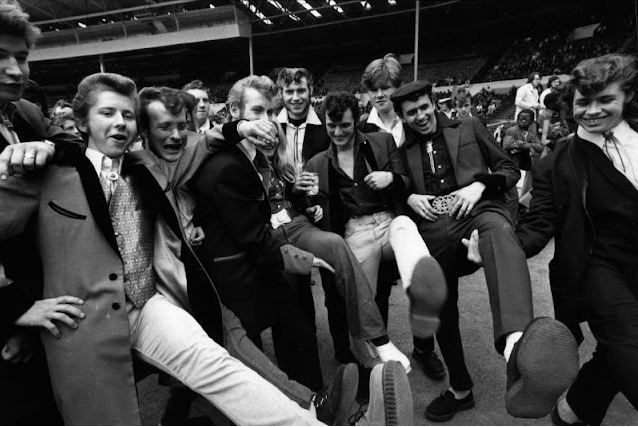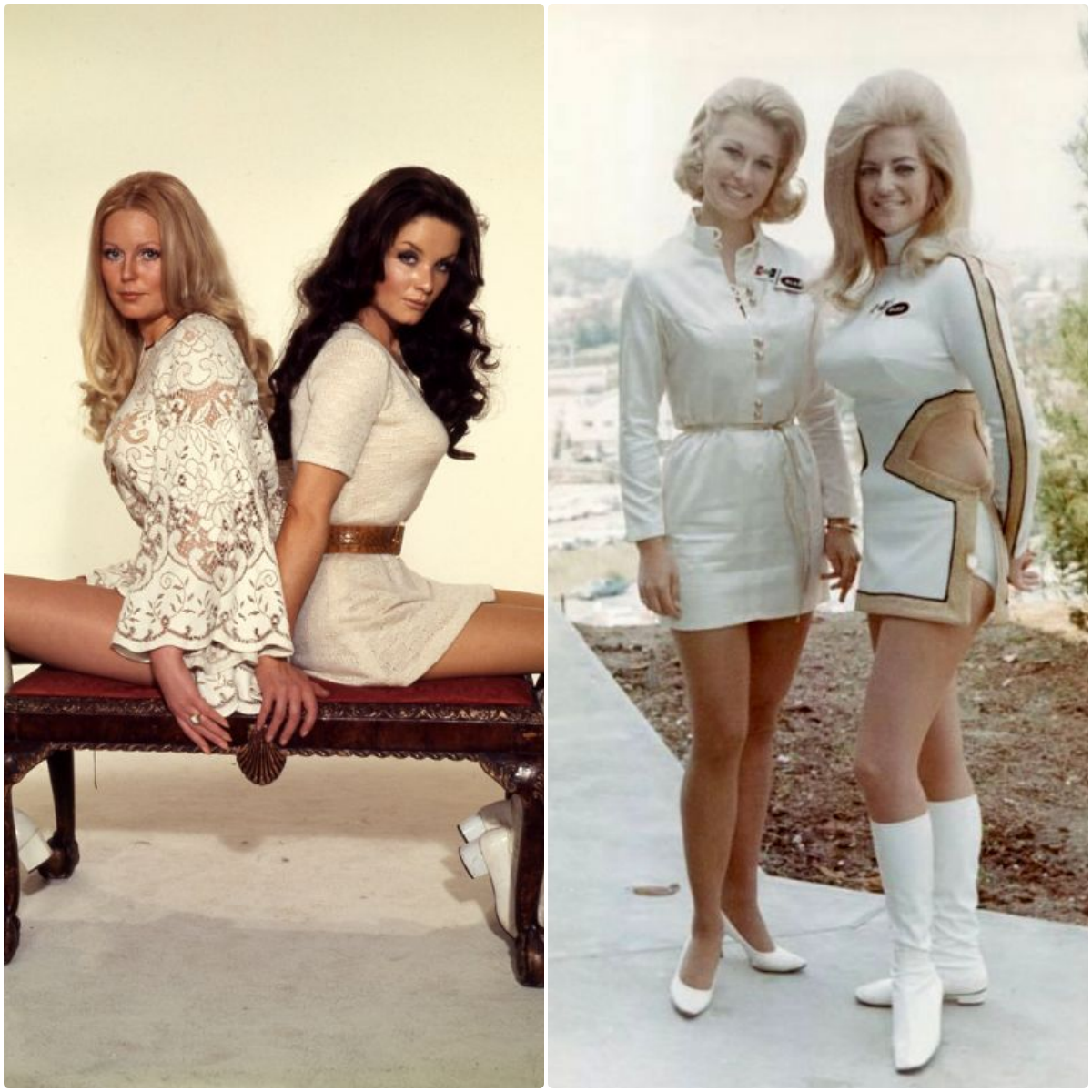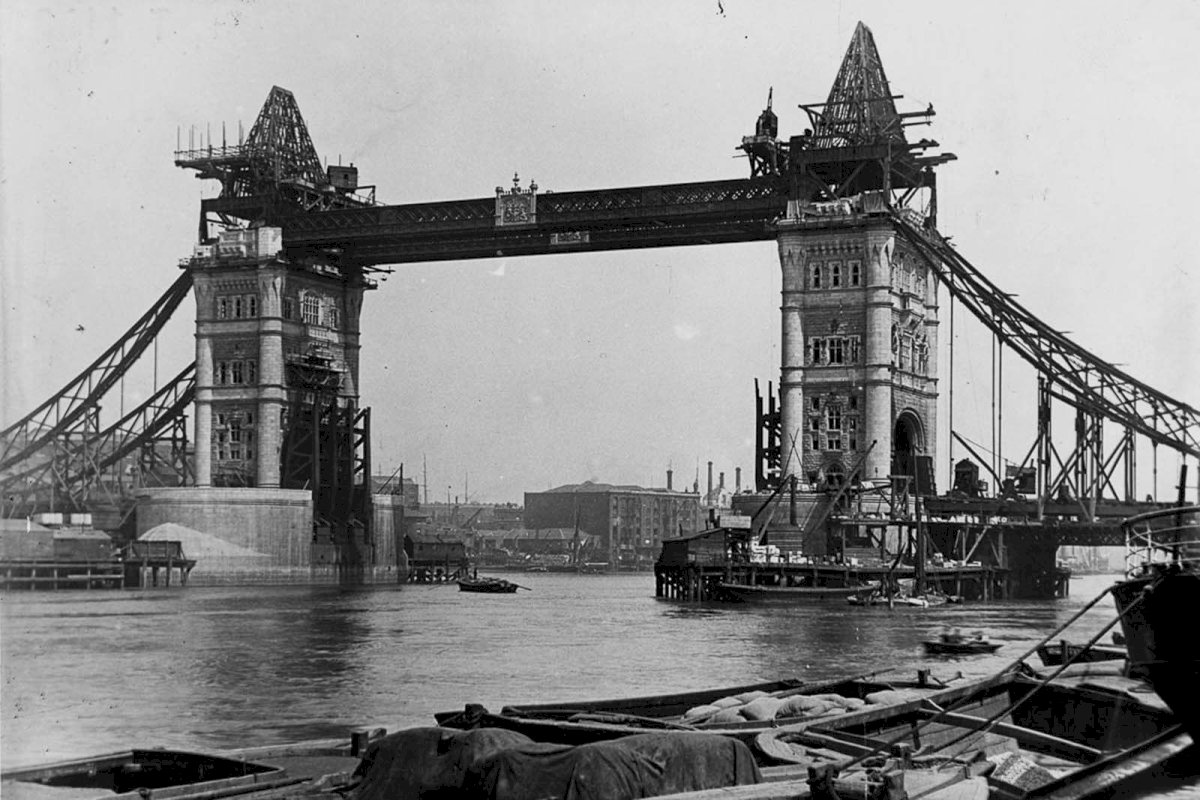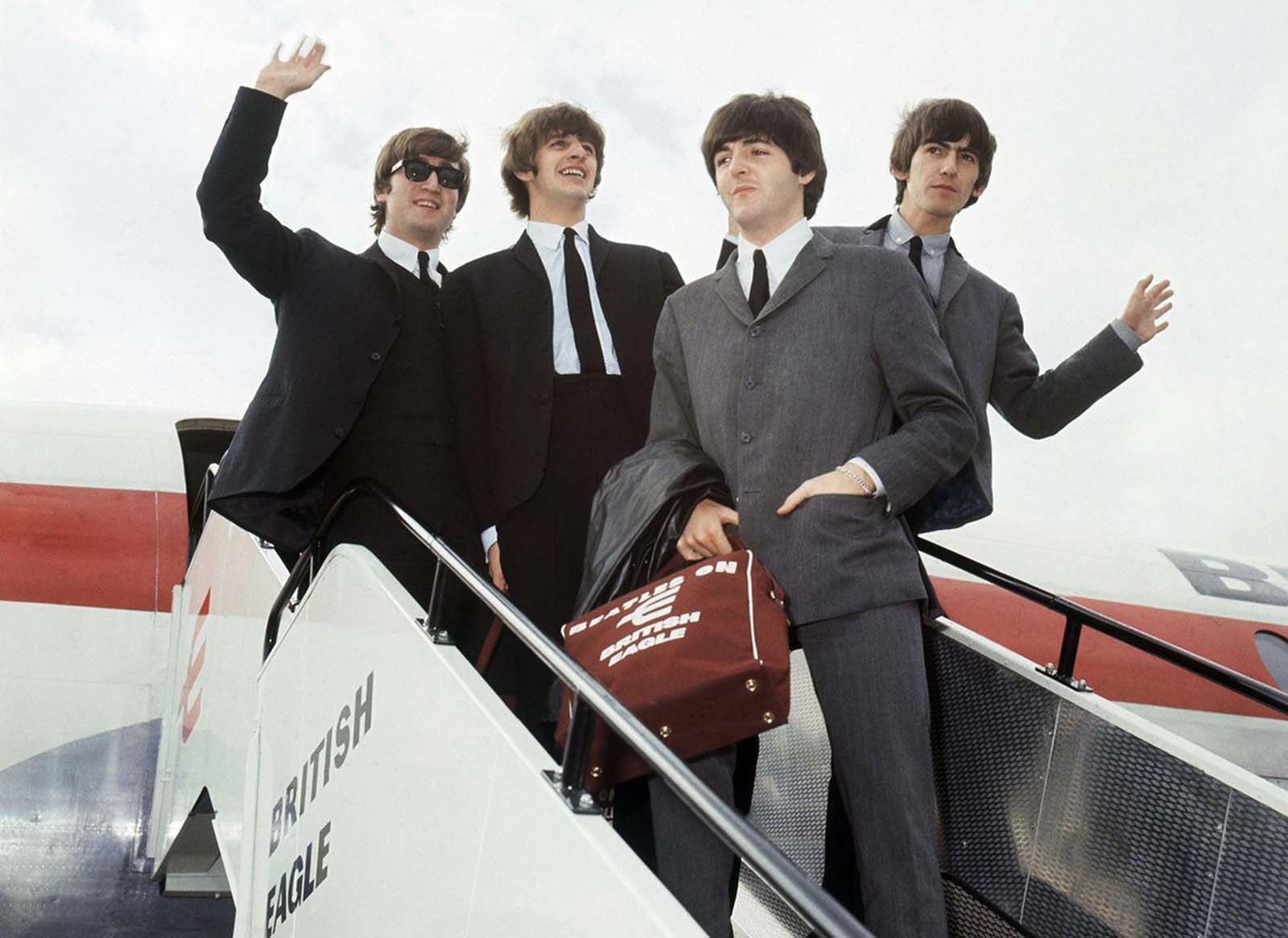
The Beatles leave London airport in 1964. From left: John Lennon, Ringo Starr, Paul McCartney, and George Harrison. Enthusiastic fans welcomed the Beatles in airports and concert halls around the world in 1964, as Beatlemania swept the globe.
In 1964, the Beatles achieved an unprecedented level of success both in their home country of Britain and in the United States. They amassed crowds of adoring fans that followed them wherever they went, a phenomenon often referred to as “Beatlemania.”
On February 9, 1964, an estimated 73 million people tuned in to see the Beatles perform live on The Ed Sullivan Show, a popular television program. This meant that 45% of homes with televisions in the U.S. were watching the Beatles, a record at that time.
Their appearance on The Ed Sullivan Show, coupled with radio play and album promotion, spurred their meteoric rise in America. By April 4, 1964, the group held the first five spots on the Billboard Hot 100 list of popular songs, with “Can’t Buy Me Love,” “Twist and Shout,” “She Loves You,” “I Want to Hold Your Hand” and “Please Please Me” crowding the top of the charts. No other act in history has achieved such a feat.
In 1965, their concert at New York’s Shea Stadium marked the first time that a large outdoor stadium had been used for such a purpose. The event attracted an audience of 55,000, the largest of any live concert that the Beatles performed. Beatles fans were so excited and determined to see the band that police sometimes resorted to using fire hoses to hold them back.
The Beatles provided one of the first opportunities for female teenagers in Britain to exhibit spending power and publicly express sexual desire, while the group’s image suggested a disregard for adults’ opinions and parents’ ideas of morality.

Sightseeing in Paris, on January 15, 1964, the day before their opening at the Olympia Theatre in Paris, three of Britain’s four Beatles pause for a look around on the Champs Elysees. From left John Lennon, Paul McCartney, and George Harrison. In the background is the Arc de Triomphe.
In the description of author and musician Bob Stanley, the band’s domestic breakthrough represented a “final liberation” for the nation’s teenagers and, by coinciding with the end of National Service, the group “effectively signaled the end of World War II in Britain”.
By 1966, John Lennon controversially remarked that the group was “more popular than Jesus now”. Soon after, the Beatles’ travels were further entangled by mob revolt, violence, political backlash, and threats of assassination, as well as more extreme displays of deity-like worship.
They were so overwhelmed that they stopped touring and became a studio-only band. Although commentators speculated that the move would lead to a decline in popularity, their 1967 album Sgt. Pepper’s Lonely Hearts Club Band was critically acclaimed and revolutionized the music industry.
By then, the Beatlemania phenomenon had largely subsided, though the group maintained a loyal following and commanded much cultural influence throughout the remainder of their career and in the decades since.

John Lennon, left; George Harrison, center holding guitar; and Ringo Starr from the Beatles, backstage in Versailles, France, on January 15, 1964.

The Beatles perform their first concert outside of Britain, at the Olympia in Paris, on January 17, 1964.

Police hold back screaming fans fighting to get near their idols, the Beatles, when the Liverpool pop group returned to London Airport from Paris, on February 5, 1964. A strong police escort had to accompany the four Beatles from their aircraft to the customs channel.

Three Beatles fans attempt to enter the Customs Hall at London Airport by crawling into the baggage conveyor belt on February 5, 1964.

The Beatles, from left, Ringo Starr, George Harrison, John Lennon and Paul McCartney, in their New York hotel after their arrival in the U.S. on February 7, 1964. The British rock group, on their first American tour, was pelted with jelly beans and candy kisses by screaming teen-age fans.
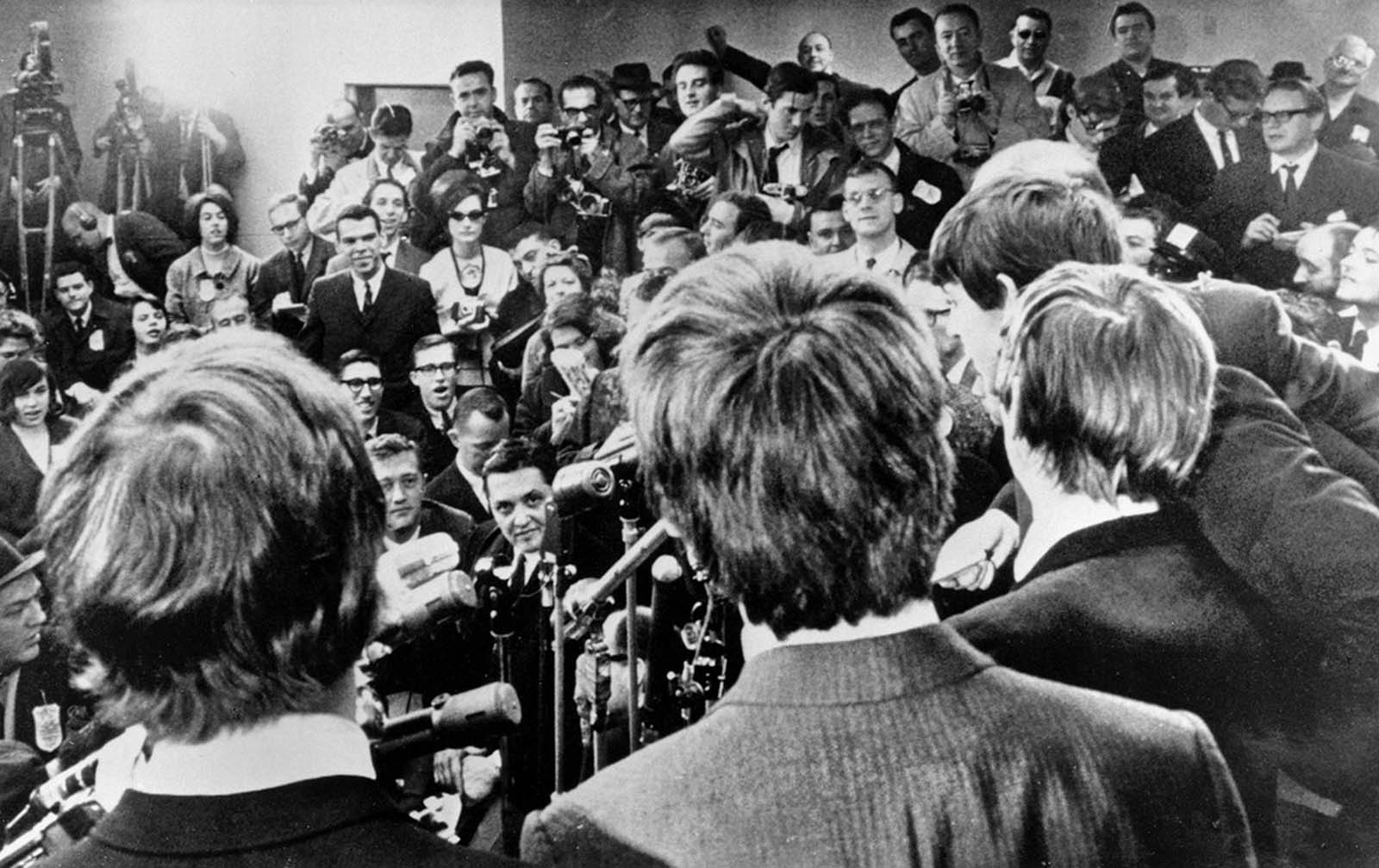
The Beatles face the media on their arrival in New York on February 7, 1964.
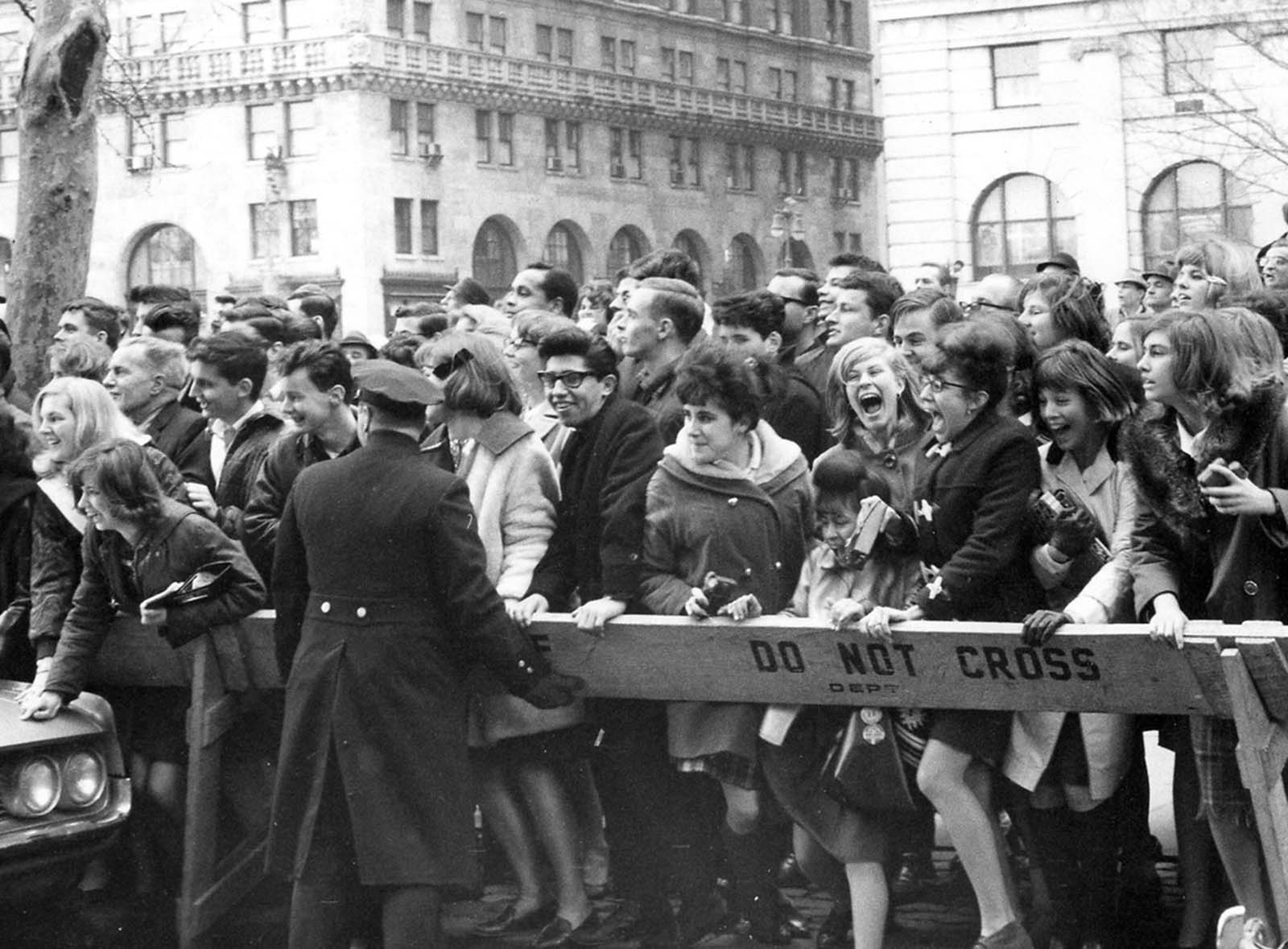
Beatles fans push forward in hopes of getting a view of the band after their arrival for an American tour in New York on February 7, 1964.
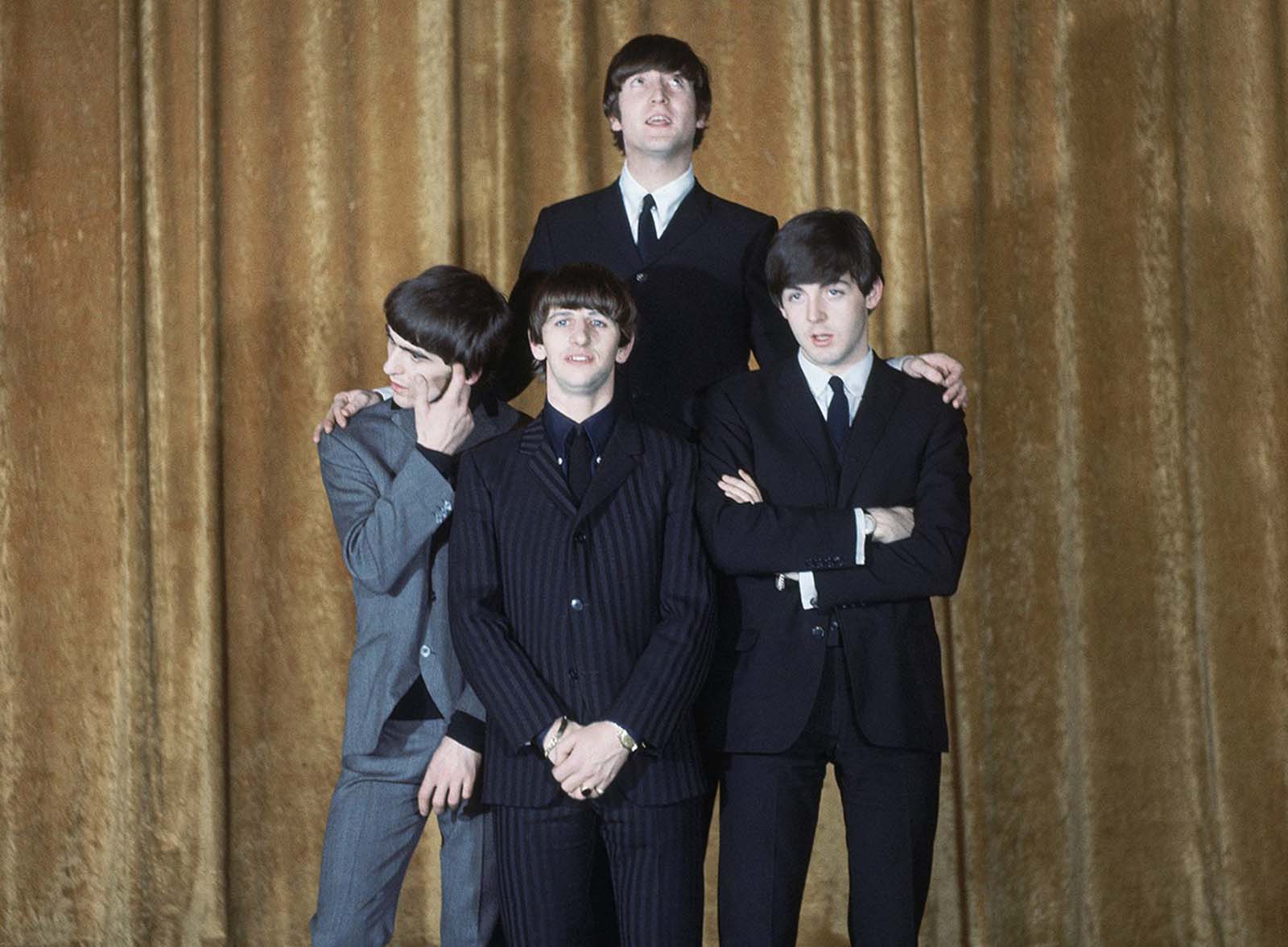
The Beatles on the set of the Ed Sullivan Show in New York, on February 8, 1964.
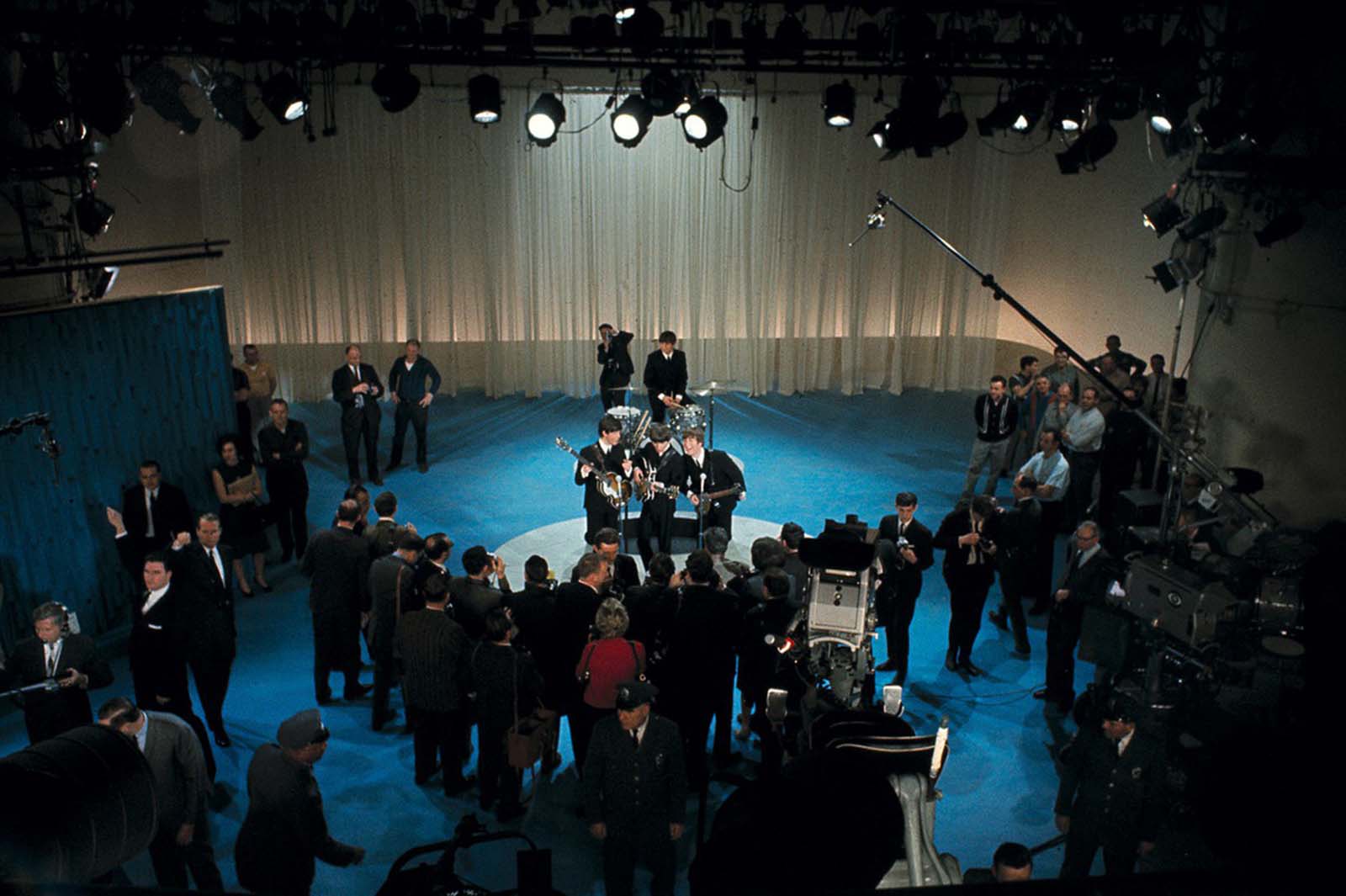
The British rock and roll group the Beatles are surrounded by photographers on stage at CBS’ Studio 50 before their live television appearance on The Ed Sullivan Show in New York City on February 9, 1964.
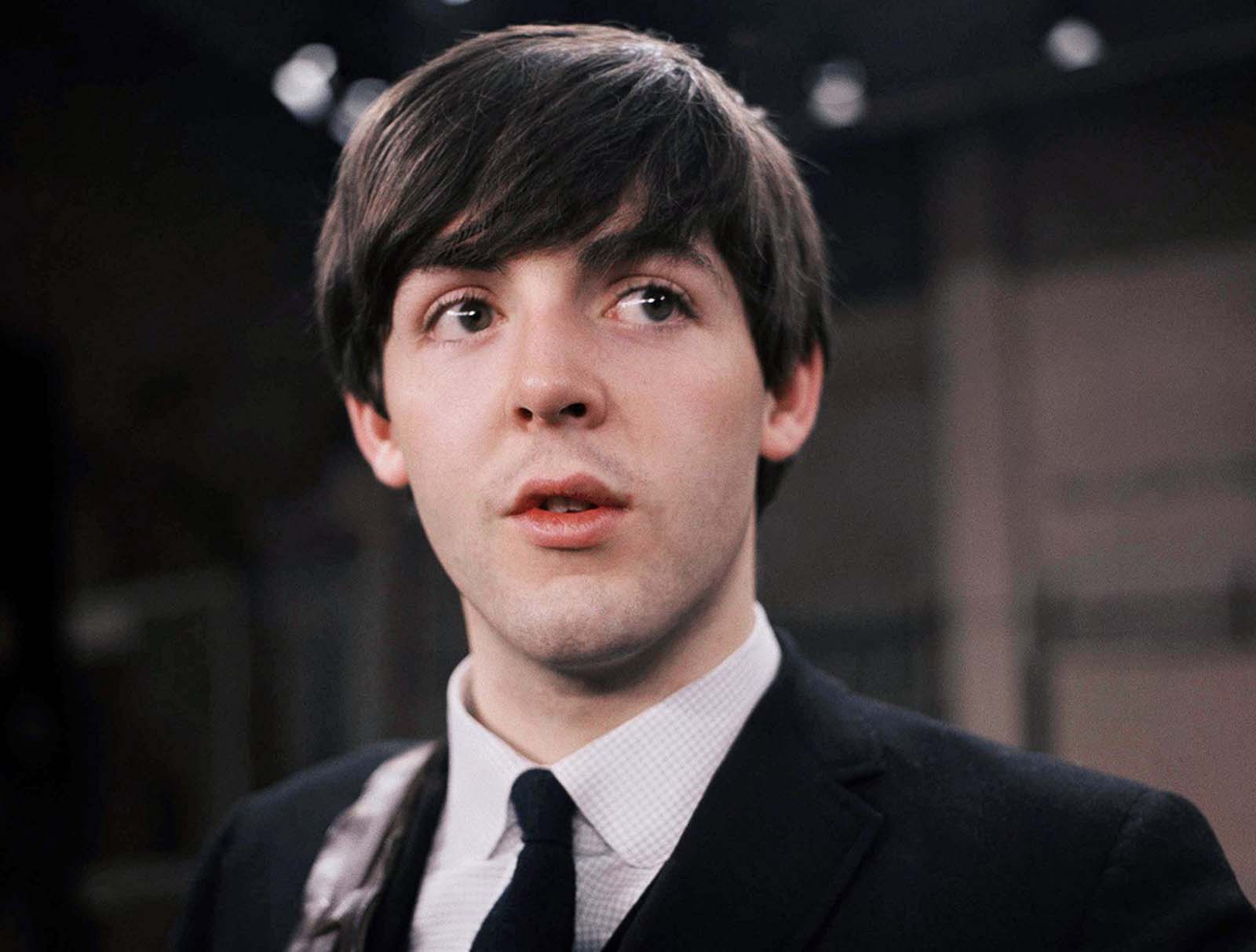
Paul McCartney, 21 years old, on the set of the Ed Sullivan Show with the Beatles, on February 9, 1964.

Paul McCartney, right, shows his guitar to Ed Sullivan before the Beatles’ live television appearance in New York on February 9, 1964. Behind Sullivan, from left, Beatles manager Brian Epstein, John Lennon, and Ringo Starr.

The Beatles perform on the Ed Sullivan Show in New York on February 9, 1964. An estimated 73 million viewers — more than a third of the U.S. — saw the performance, a record audience at the time.

The Beatles perform at the Coliseum in Washington, District of Columbia, during their first American tour.

The British rock and roll group the Beatles perform at Carnegie Hall in New York City, on February 12, 1964.

Beatle Paul McCartney flashes a smile as he rushes from New York’s Carnegie Hall after two wild performances on February 12, 1964. Behind him is band mate John Lennon.

The Beatles rehearse for their second appearance on the Ed Sullivan Show, 1964.

The Beatles take a fake blow from Cassius Clay, who later changed his name to Muhammad Ali, while visiting the heavyweight contender at his training camp in Miami Beach, Florida, on February 18, 1964.
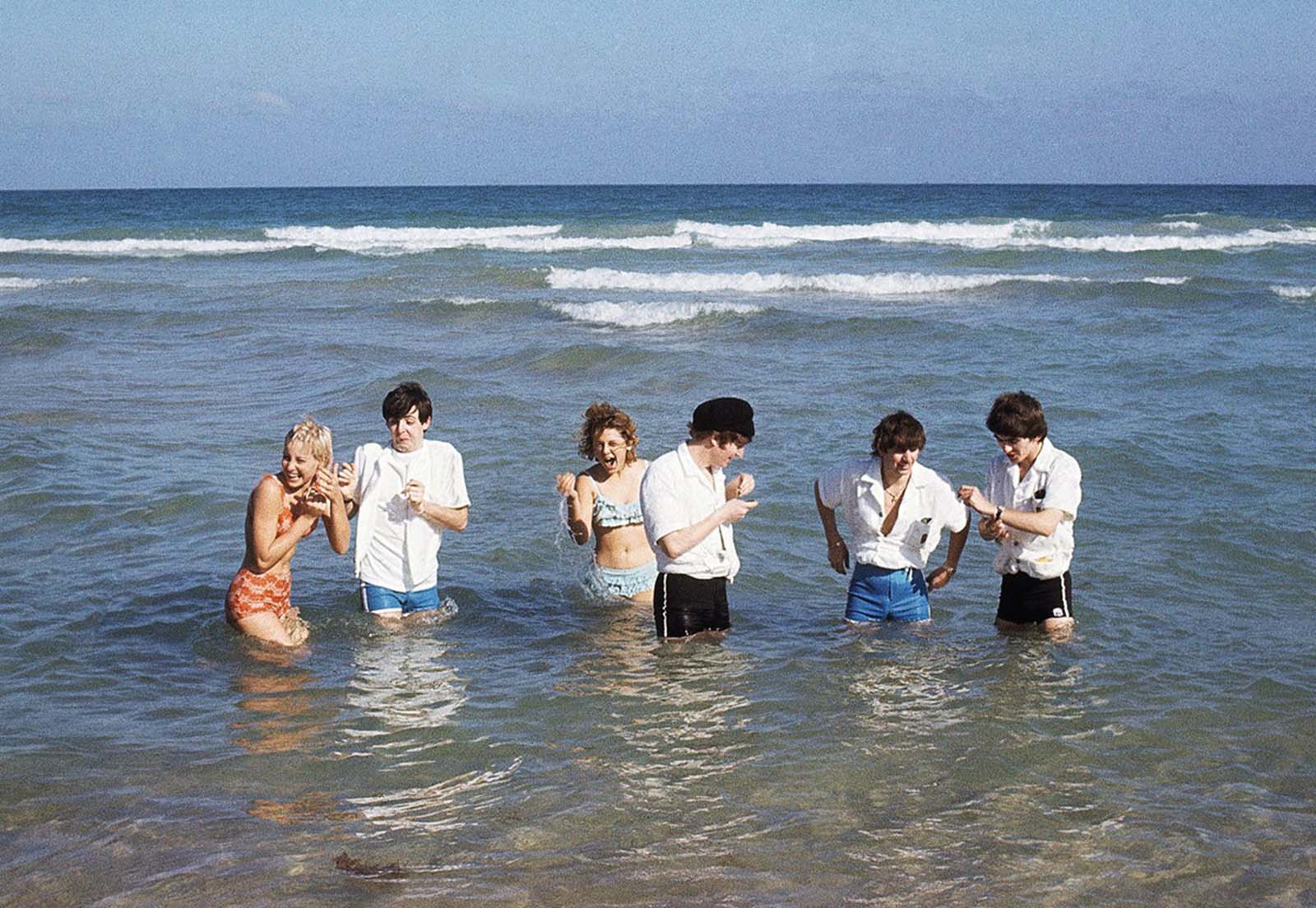
The Beatles wade in the surf in Miami, Florida in February of 1964, with unidentified women.
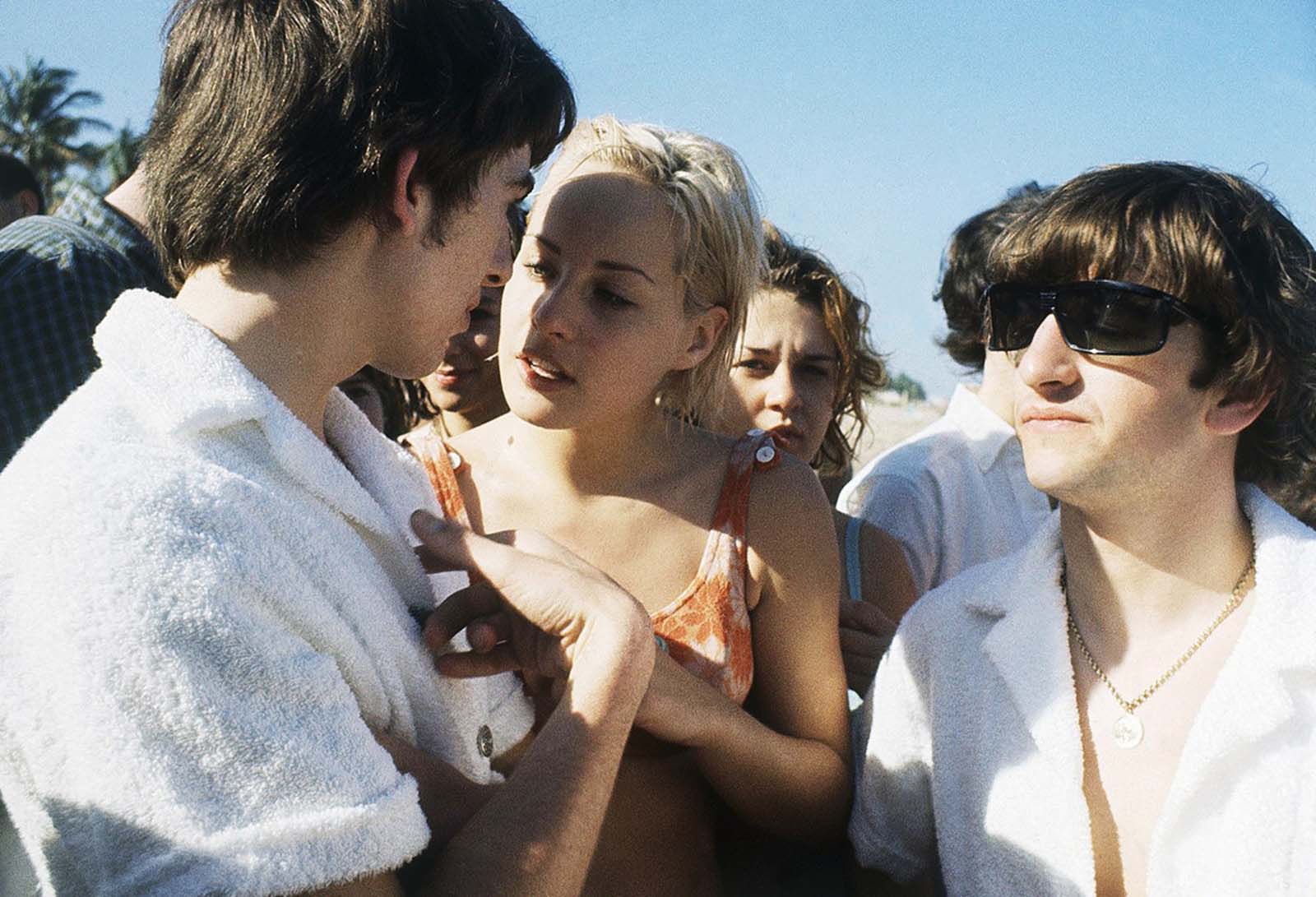
Two of the Beatles, George Harrison, left, and Ringo Starr, right, at the beach in Miami, Florida, in February of 1964. Others are unidentified.

Policemen good-humoredly control screaming Beatles fans as the Liverpool pop group were welcomed by a group of more than 5,000 on their arrival at London Airport, on February 22, 1964, on their return from America.

The Beatles arrive at London Airport, England, February 22, 1964, after their visit to the United States. In the foreground is Paul McCartney, carrying record albums under his arm (including “Um Um Um Um Um Um – The Best of Major Lance”), and George Harrison, left, talking to John Lennon.
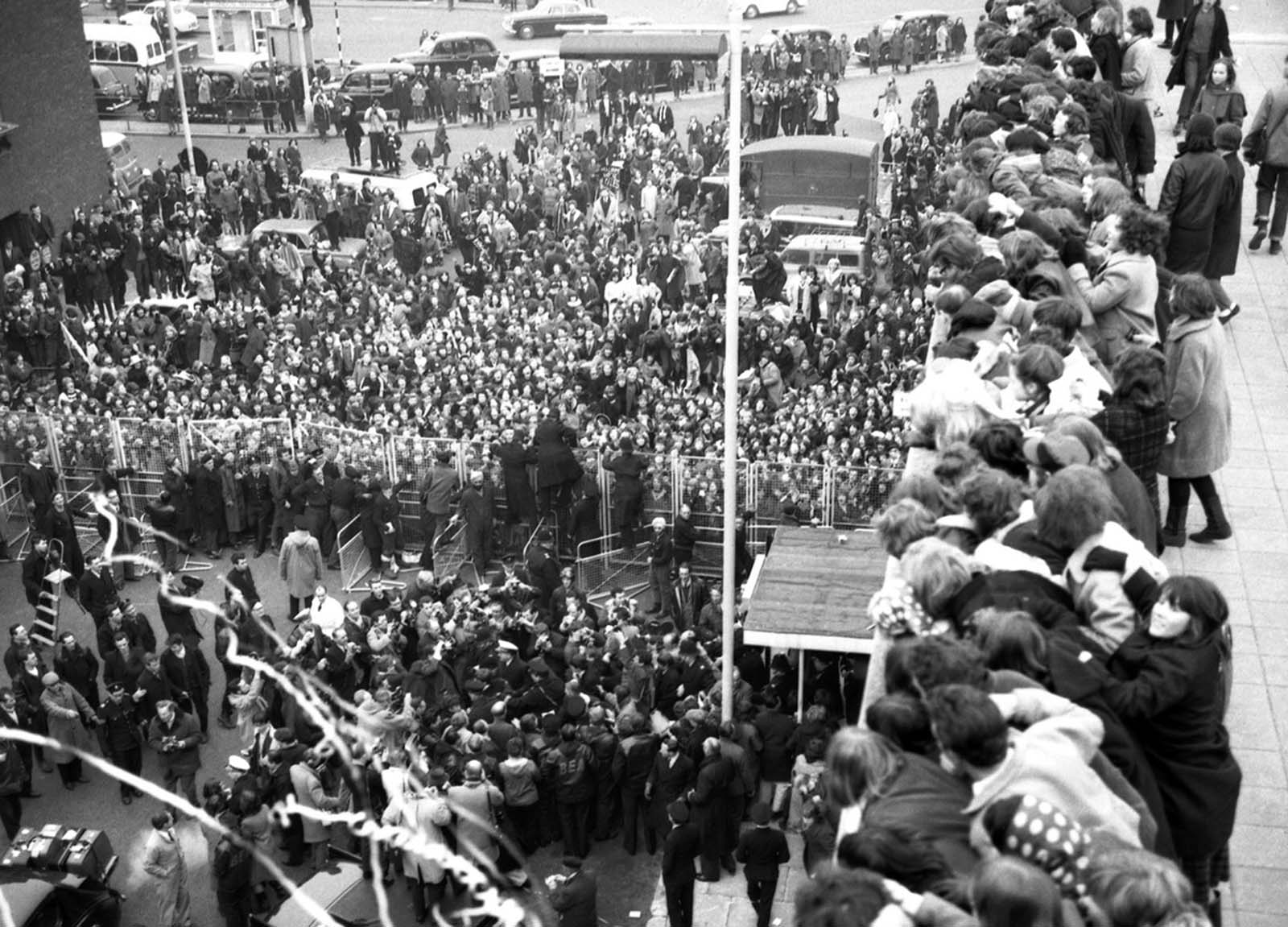
The Beatles (to left of flagpole) are surrounded by newsmen and press photographers and overlooked by hundreds of fans after their arrival at London Airport, England, having flown in from New York on February 22, 1964.

The Beatles rehearse for their forthcoming television show at Wembley studios in London, in April of 1964. In this skit, Ringo Starr, second from left, is costumed as Sir Francis Drake, and the others, from left, John Lennon, George Harrison and Paul McCartney play Heralds.

Beatle drummer Ringo Starr eases the pain on a wax likeness of himself with a cigarette, during the unveiling ceremony for four wax models of the Beatles at Madame Tussaud’s Waxworks, in London, England, on April 29, 1964.

4,000 Beatles fans gathered in the streets around the Royal Hotel in Copenhagen, Denmark, several hours before the British pop group, The Beatles, arrived on June 4, 1964. Danish police try to hold back the fans from rushing the hotel.

The Beatles during television recordings in Hillegom, Netherlands, on June 5, 1964. Drummer Ringo Starr was briefly hospitalized after a tonsillectomy, and Jimmie Nicol sat in on drums for several concerts.

Dutch fans scream and shout during a performance by the Beatles in Blokker, Netherlands, on June 6, 1964.
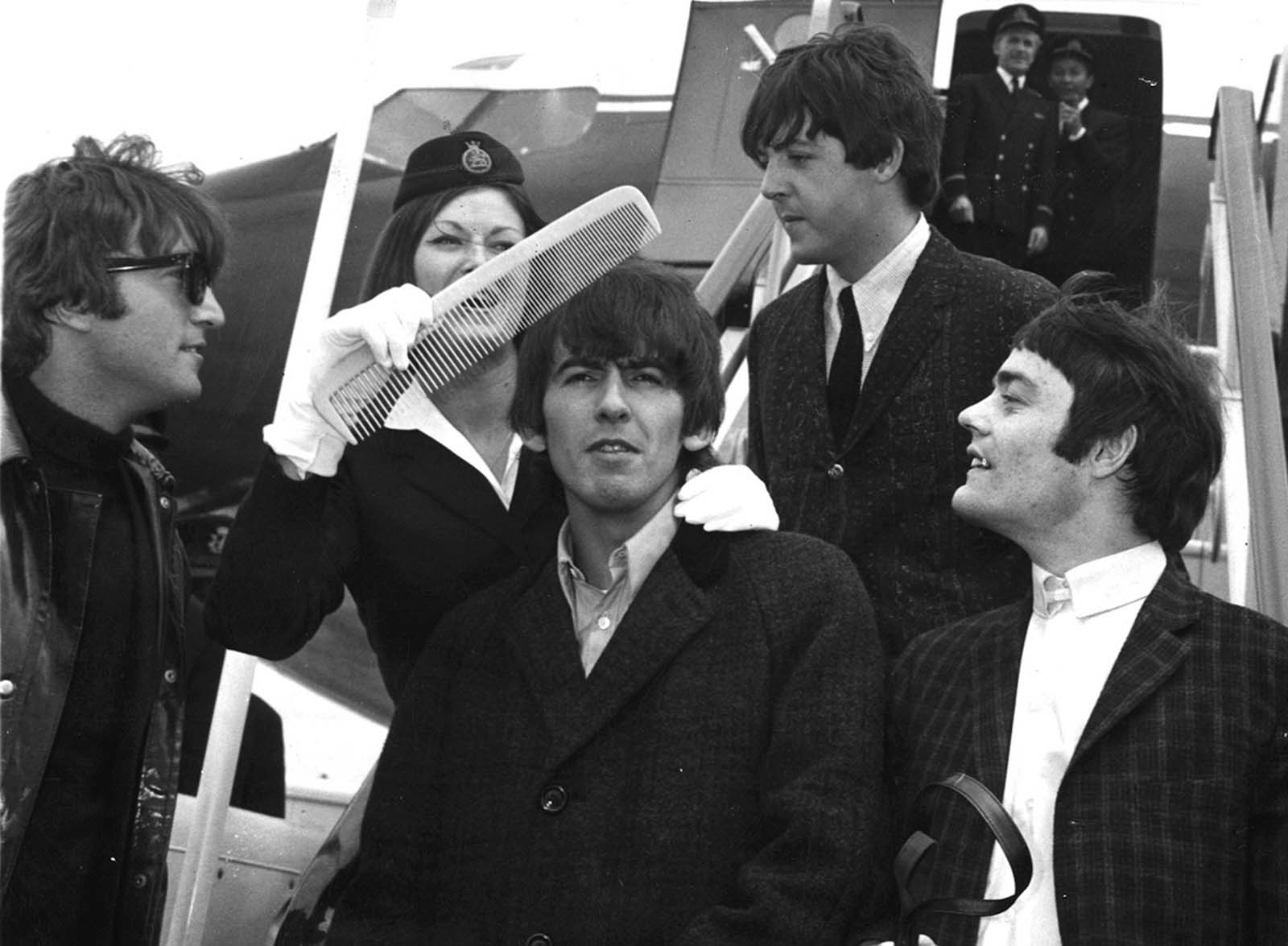
Watched by fellow Beatles, Guitarist George Harrison gets the big comb treatment from BOAC stewardess Anne Creech, after their arrival at Windy airport in London, England, on June 7, 1964. From left: John Lennon, George Harrison, Paul McCartney and drummer Jimmy Nicol, who stood in for Ringo Starr for the trip to The Netherlands.

A section of the huge crowd which gathered outside the Town Hall in Melbourne, Australia, on June 16, 1964, to greet the Beatles, during their tour of Australia and New Zealand.

Two Australian soldiers link arms to control a section of the crowd outside the Southern Cross Hotel in Melbourne on the arrival of the Beatles, on June 14, 1964. Some 300 policemen and 100 soldiers made an attempt to contain 10,000 screaming fans and to keep open a passageway for the singing group’s cars. Like most of the barriers, this one was pushed aside at the height of the crush. The Beatles were eventually taken into the hotel through a back entrance.

Drummer Jimmy Nicol, who had been stand-in for tonsillitis-stricken Beatle Ringo Starr, sits alone and contemplative at Melbourne’s Essendon Airport, while waiting to return home on June 15, 1964. Ringo rejoined the Beatles the day before.
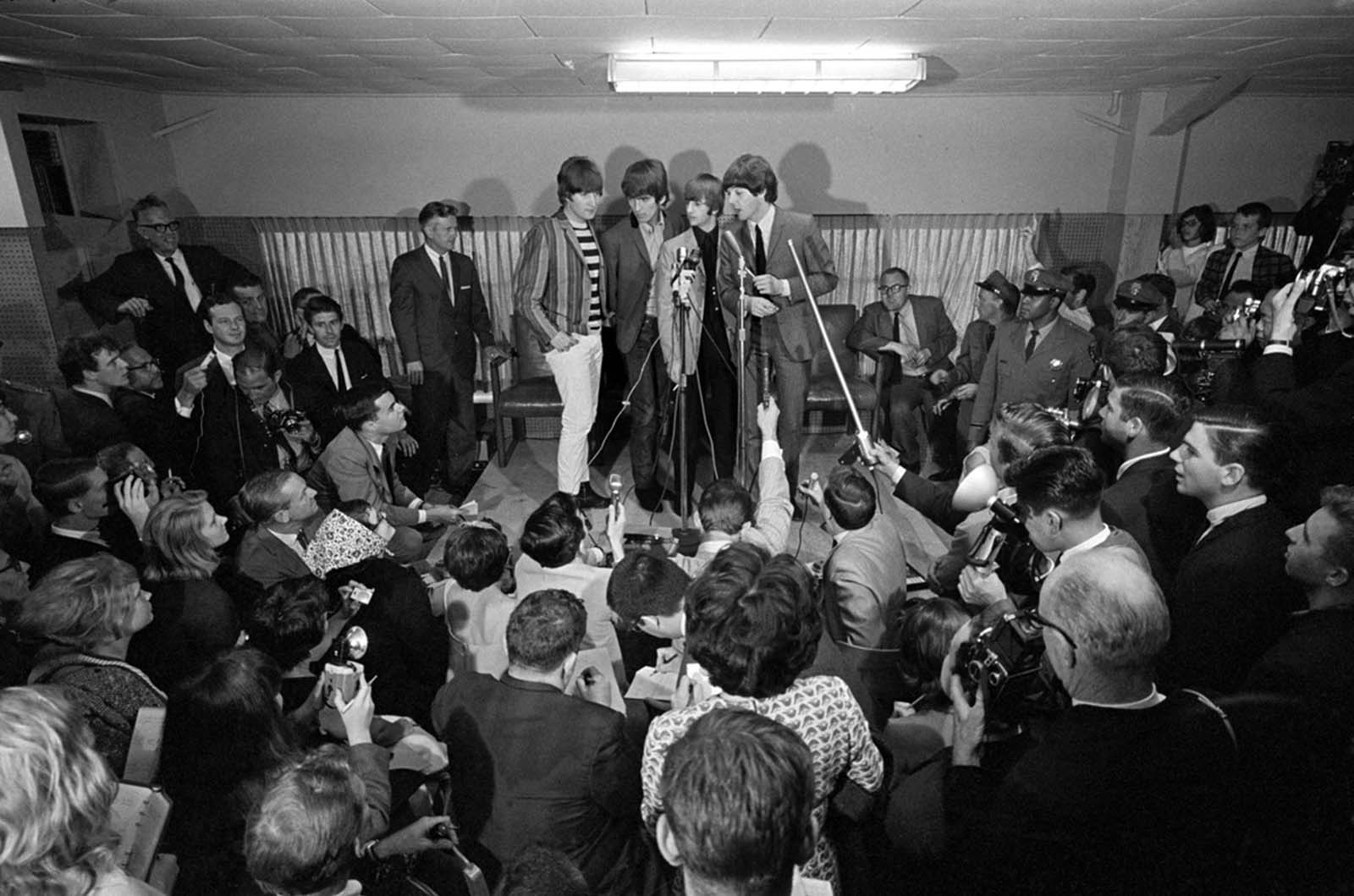
The four members of the Beatles hold a press conference at an undetermined location ca. 1964.
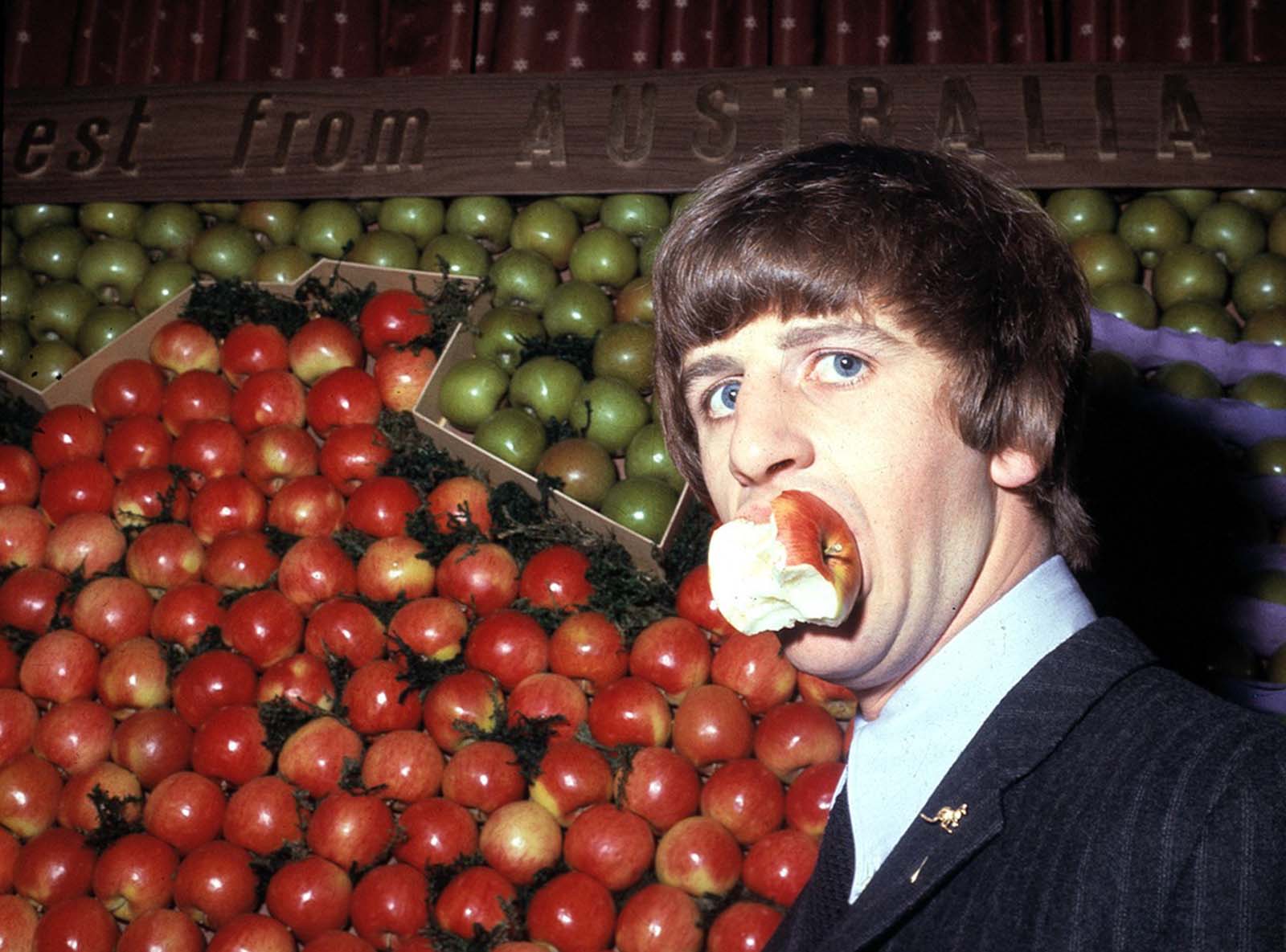
Ringo Starr samples an apple during a visit to Australia House in London, England, in 1964.

The Beatles are suspended in midair above the stage during rehearsal for their part in the charity show “Night of 100 Stars” at the Palladium in London, England, on July 22, 1964.
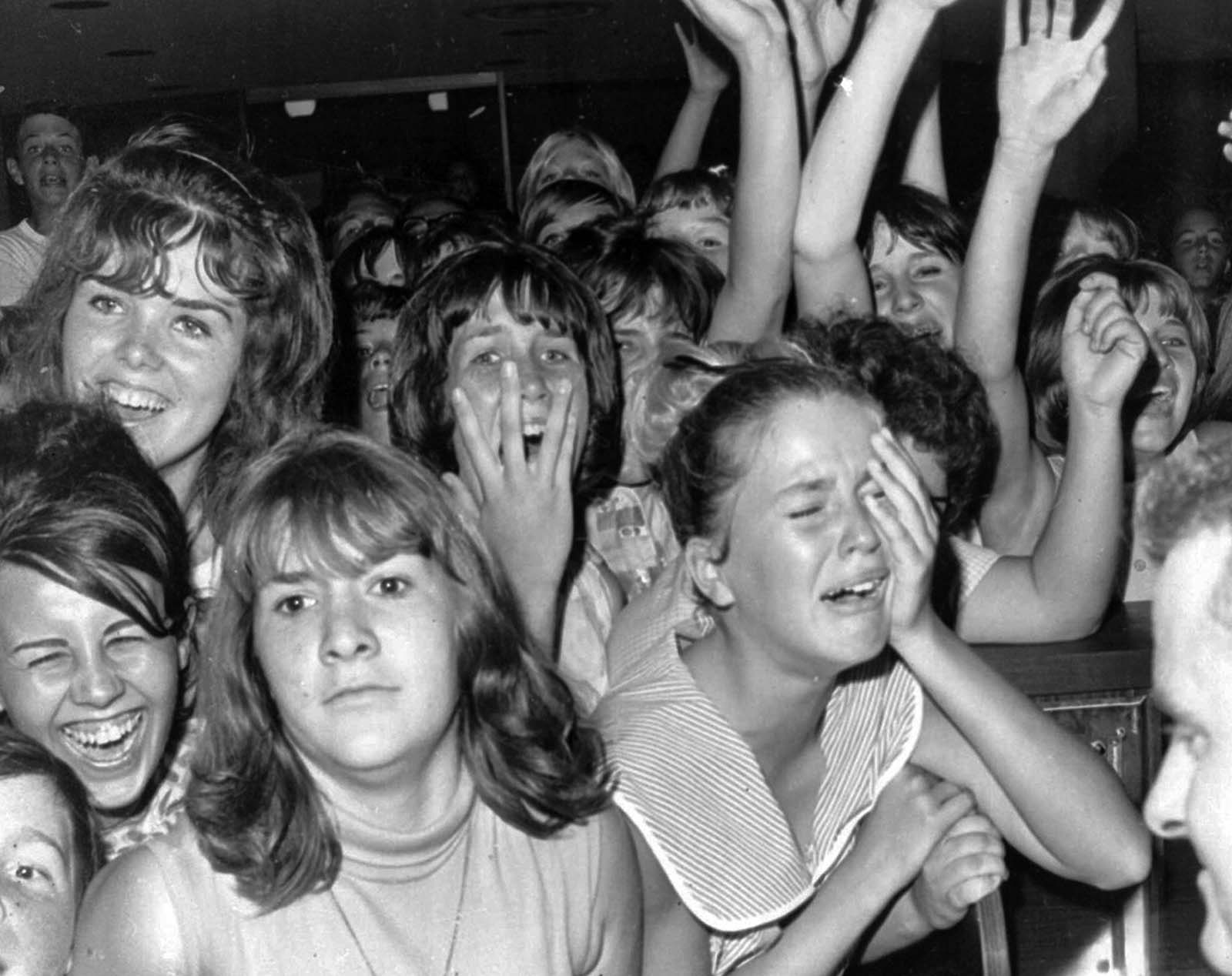
Just the sight of The Beatles from a distance caused this reaction among a group of girls at the Los Angeles International Airport on August 18, 1964. Airport security kept several thousand youngsters away from the British singers during a brief stopover in Los Angeles en route to San Francisco.

Despite a constant din of screaming teenagers, the Beatles successfully opened their second U.S. tour in San Francisco on August 20, 1964.

A man covers his ears as 18,000 screaming fans react to The Beatles in the Hollywood Bowl, California, during their U.S. concert tour on August 23, 1964.

Police Inspector Carl Bear of Cleveland’s Juvenile Bureau, left, orders George Harrison and the other members of the Beatles, off the stage of the Public hall, Cleveland, Ohio, on September 16, 1964 as teenagers rushed the stage. Bear let the group back on after wailing youngsters were given 15 minutes to cool down.

The British rock and roll band the Beatles perform at the Memorial Coliseum in Dallas, Texas, on September 18, 1964 on their second U.S. tour.
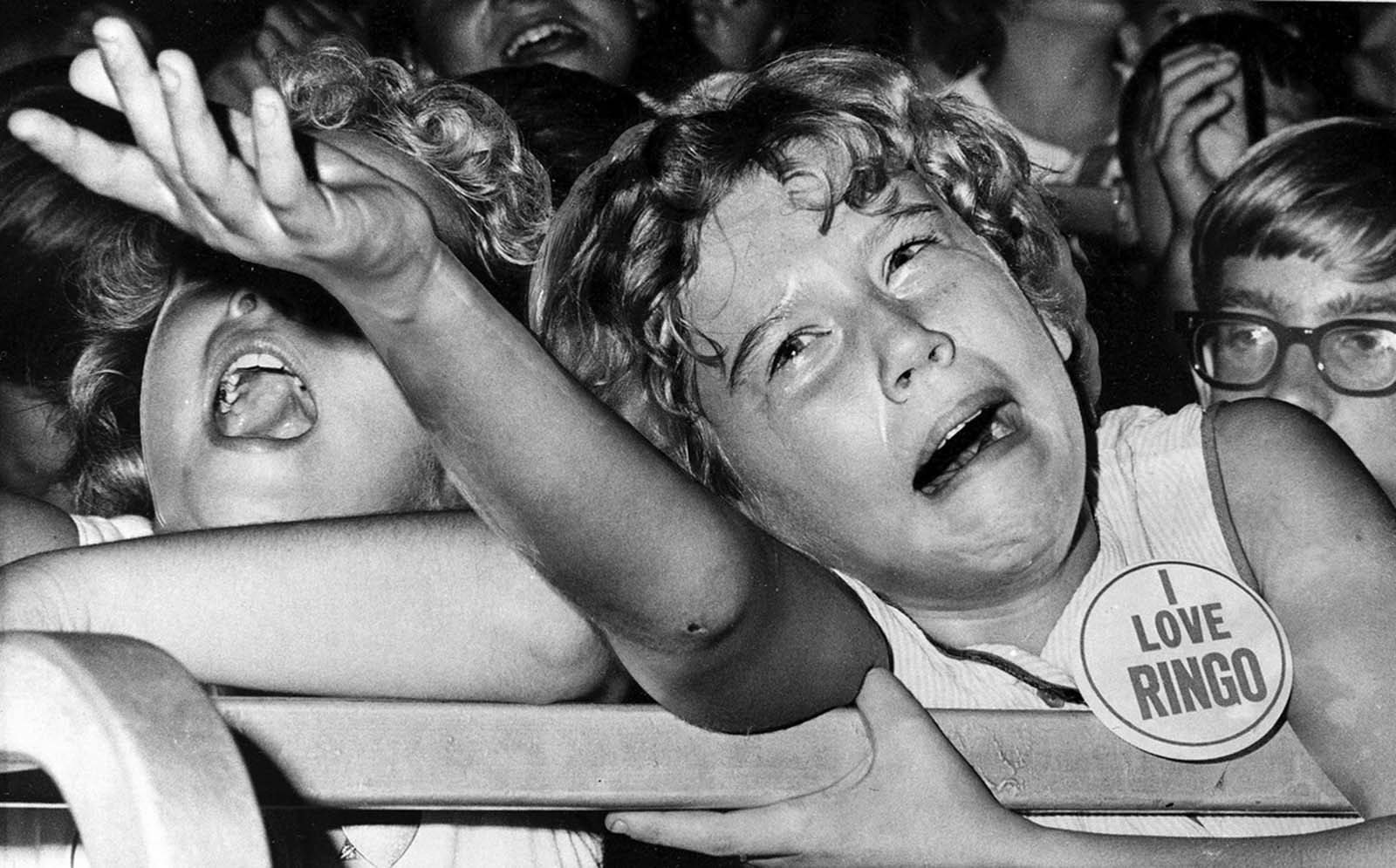
A tearful Beatle lover pleads unsuccessfully with a policeman to carry her fan button to Ringo Starr, one of the four mop-top singers who drew squeals and shrieks from more than 30,000 spectators at two Indiana State Fair shows in Indianapolis on September 4, 1964.
(Photo credit: AP Photo / National Archives / Wikimedia Commons)
